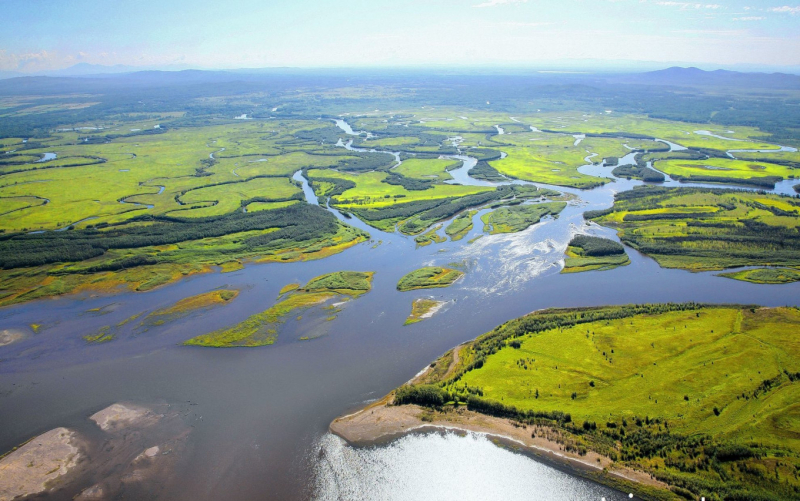Amur River

The Amur River, which forms the border between Russia's Far East and Northeastern China, is the world's tenth-longest river. The Amur River is 2,824 kilometers (1,755 miles) long, with a 1,855,000-square-kilometer drainage basin (716,000 sq mi). The kaluga is the largest fish species in the Amur, reaching lengths of up to 5.6 meters (18 ft). Northern snake head, Amur pike, taxmen, Amur catfish, predatory carp, and yellow cheek are among the large predatory fish found in the river basin, as are the northernmost populations of the Amur soft shell turtle and Indian lotus.
The Amur is thought to be home to at least 123 species of fish from 23 different families. The Gobioninae subfamily of Cypriniformes has the most members, followed by Salmonidae. A number of the species are indigenous to the area. The monotypic genera Pseudaspius and Mesocottus are exclusively found in the Amur and a few neighboring coastal rivers.
The kaluga, Amur sturgeon, Sakhalin sturgeon, and starlet are all members of the Acipenseridae family. The Kaluga and Amur sturgeons are endemic to their respective regions. In the 1950s, the starlet was introduced from the Ob.
Length: 2824 km








